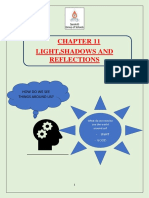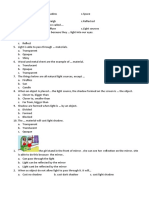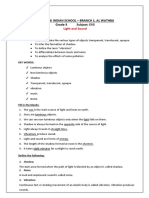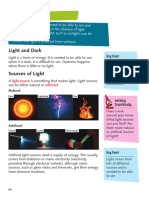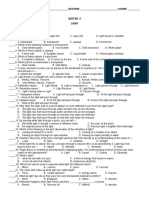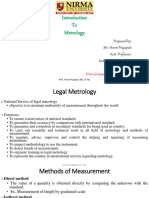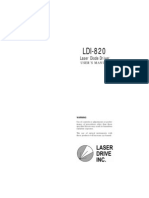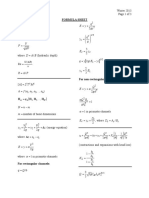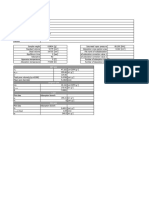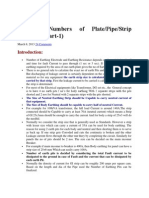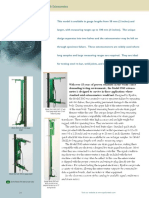0% found this document useful (0 votes)
8 views4 pagesLight Notes
The document discusses the properties and behavior of light, including definitions of luminous, non-luminous, transparent, translucent, and opaque objects. It includes fill-in-the-blank exercises, questions and answers about light, and explanations for various phenomena related to light and shadows. Key concepts include how light travels, the formation of shadows, and examples of different types of objects based on their interaction with light.
Uploaded by
aarvi.encCopyright
© © All Rights Reserved
We take content rights seriously. If you suspect this is your content, claim it here.
Available Formats
Download as DOCX, PDF, TXT or read online on Scribd
0% found this document useful (0 votes)
8 views4 pagesLight Notes
The document discusses the properties and behavior of light, including definitions of luminous, non-luminous, transparent, translucent, and opaque objects. It includes fill-in-the-blank exercises, questions and answers about light, and explanations for various phenomena related to light and shadows. Key concepts include how light travels, the formation of shadows, and examples of different types of objects based on their interaction with light.
Uploaded by
aarvi.encCopyright
© © All Rights Reserved
We take content rights seriously. If you suspect this is your content, claim it here.
Available Formats
Download as DOCX, PDF, TXT or read online on Scribd
/ 4









